
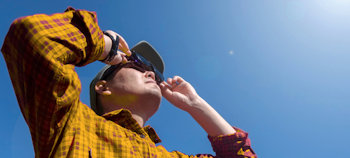 |
| What will happen when the internet gets eclipsed? |
| Special glasses can
protect us during a solar eclipse.
Not so much, an "internet eclipse." |
| On April 8, the
moon’s shadow will sliced an arc across North America
from Mexico to Maine. 3.7 million eclipse enthusiasts
crowded that 120-mile-wide corridor to
view “totality” before turning to depart in a mass
exodus. But no one parted the sea of vehicles.
First-responders had
difficulty reaching those who needed help. Food, fuel and medical services
were in
short supply. Three counties in Texas
issued local states of emergency, preparing for a
doubling of their populations in the days around the
event. But worse was the communications gridlock. The eclipse happened where it happened, without regard for cell-tower-capacity. Cellular services – especially in lower-capacity areas – overloaded, leaving both travelers and residents without the ability to make calls. Cellular is the gateway to the internet, especially for those on wheels. When it is maxed out, everything from the delivery of wayfinding assistance, to weather warnings, to emergency notices is impacted. |
 |
| Does this have a
familiar “ring” to it? Recall that on February 22, AT&T’s cellular network went offline nationwide for 12 hours, stranding millions who were unable to make calls; some found themselves without prescriptions and lifesaving services. The FBI and DHS launched inquiries, and on March 7, the FCC followed suit. AT&T has blamed the incident on an “incorrect process” that was used while expanding their network. Why such an error required 12 hours to correct was not explained. Just three weeks before that interruption, a Congressional Committee had been reminded by FBI Director Christopher Wray that bad actors in other countries are targeting our infrastructure, intending to cause “real world harm” to US citizens. Jen Easterly, head of the US Cybersecurity and Infrastructure Security Agency, advised the Committee that Americans need to prepare for an unexpected cyberattack. It's hard to get any more direct than that. That testimony, the AT&T outage and the recent eclipse have raised the awareness in the US to a reality: for the sake of public safety, we are remiss if we do not provide a backstop for citizens when digital communications are interrupted. |
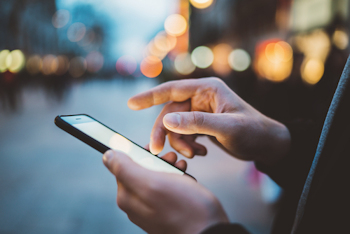 |
| In a crisis, smart people are learning not to count on their smartphone to show up. |
| Disruption of
wireless service is frequently the result of natural
disasters. But a cyberattack due to malicious activity
or war could be way worse. It could eclipse not only the
wireless infrastructure but the internet itself,
presenting the potential to be dramatically more
devasting; its duration, its scope and its geography
could be massive in comparison. Local broadcasters have a unique opportunity to stand in the gap. That fact is even recognized internationally, with the UN’s UNESCO agency recently identifying broadcasters as a “vital lifeline” and encouraging the worldwide “protection of emergency radio frequencies for the public dissemination of vital information.” |
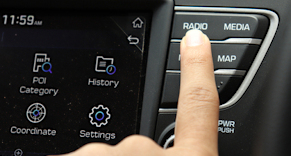 |
| Closer to home,
that reality is amplified by the bipartisan support
expressed for the
“AM in Every Vehicle Act.” That landmark
legislation, aimed at preventing carmakers from kicking
AM radio to the curb, is now poised to pass the House of
Representatives, having secured its 218th voting
supporter. The bill’s sponsor, New Jersey Representative
Josh Gottenheimer, has predicted, “It’s on its way to
becoming law.” The act would require all automobiles
sold in the United States to have AM radio receivers
conspicuously in their dashboards. Until passage,
Gottenheimer is calling on the National Highway Traffic
Safety Administration (NTSB) to require automakers to
label vehicles without AM receivers as “unsafe in
certain emergencies.” Consider how your broadcast company and you yourself can aid in awareness and preparation. Unlike a natural phenomenon, this approaching shadow is not one that can be predicted to the second. But, as our leaders are advising, it can be predicted. |
| Up on the Roof |
| Connecticut AM Celebrates Four Years of "Temporary Operation" after Unexpected Loss of Transmitter Site |
| GREENWICH, CT: WGCH AM 1490 has been delivering the news in New York’s Fairfield and Westchester Counties as long as anyone can remember. But in 2019 they met the new owner of their leased transmitter site, who delivered them the news: rent was about to go up 500%. Would the increase lead to the final sign-off for Greenwich’s long-time community radio station? Instead of taking it lying down, the WGCH station engineer chose to look up. |
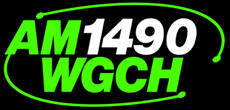 |
| He recalls, “It would have taken a considerable amount of time to get all the permits and contractors to install on the ground,…during which there would be no radio station.” |
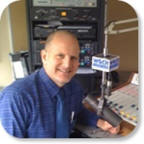 |
| WGCH News Director Tony Savino at the Mic |
| Photo courtesy of WGCH |
| But after some research, the station's engineer came across better news: a new kind of antenna that could “handle a reasonable amount of power and easily be installed on a roof.” The HPR.0990 AM Antenna, rated at 250 watts, was newly on the market. “Thanks to its swift preparation and delivery, WGCH never missed a day on the air,” asserts the engineer. |
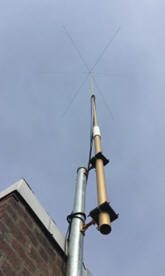 |
| The 32-foot
center-loaded whip antenna was mounted on insulators to
a mast with a groundplane “gravity-mounted” on the flat
roof beneath. A run of conventional RG8 coax down an
abandoned incinerator duct to the transmitter in the
basement competed the antenna system. Tweaking it for
resonance, the engineer then matched it and fired up his
transmitter to 250 watts, commenting that “a surprising
amount of our original Class C coverage area was
maintained using the HPR.0990, despite the antenna’s
small size. While this is a temporary solution, it is
buying us the time we need to find a new tower site.” The antenna is part of a line of "AMReady" products Information Station Specialists makes available (for purchase or rental) to broadcasters, including low power transmitters and prefabricated groundplanes. The company is currently designing a 1000-watt version of the HPR.0990 Antenna, which may allow WGCH to return to full power from the station's rooftop perch, doubling its current signal levels. That might be the best news of all. To learn more, contact Bill Baker, the sole agent for inquiries on this article. See also, "Tower Down! Norfolk's WJOI Maintains Operations with Quick Switch to New HPR.0990 AM Antenna," The Source, Sep 2019. |
PO Box 51, Zeeland, Michigan, USA, 49464-0051, Phone 616.772.2300, Email
• • •